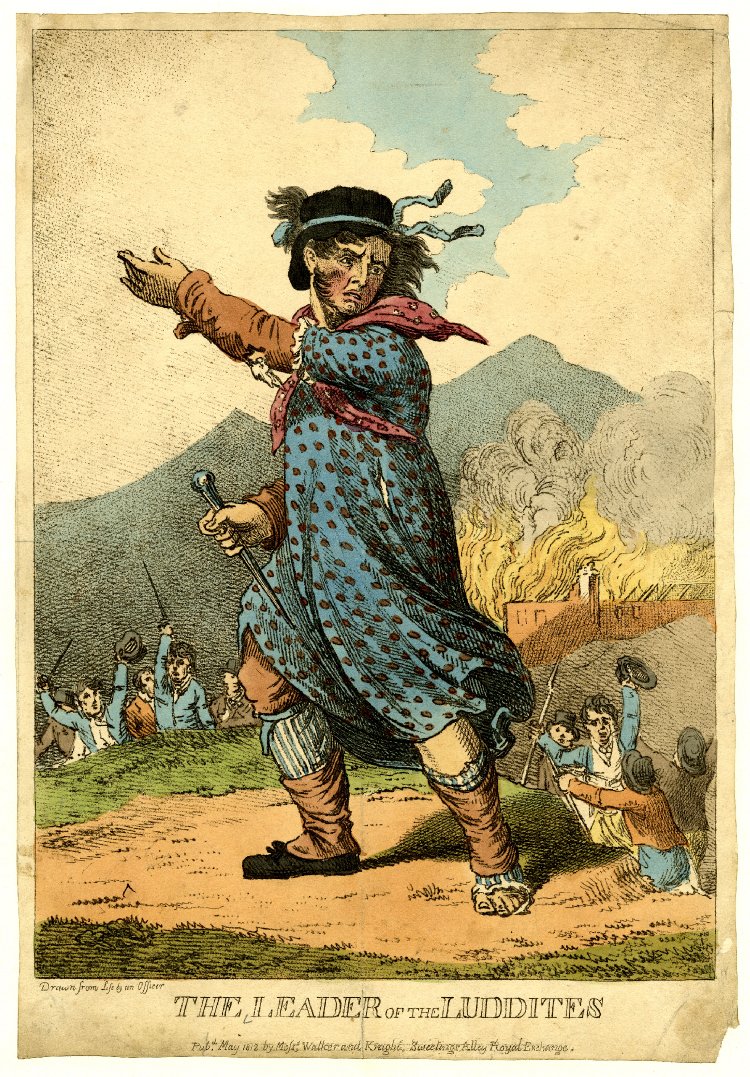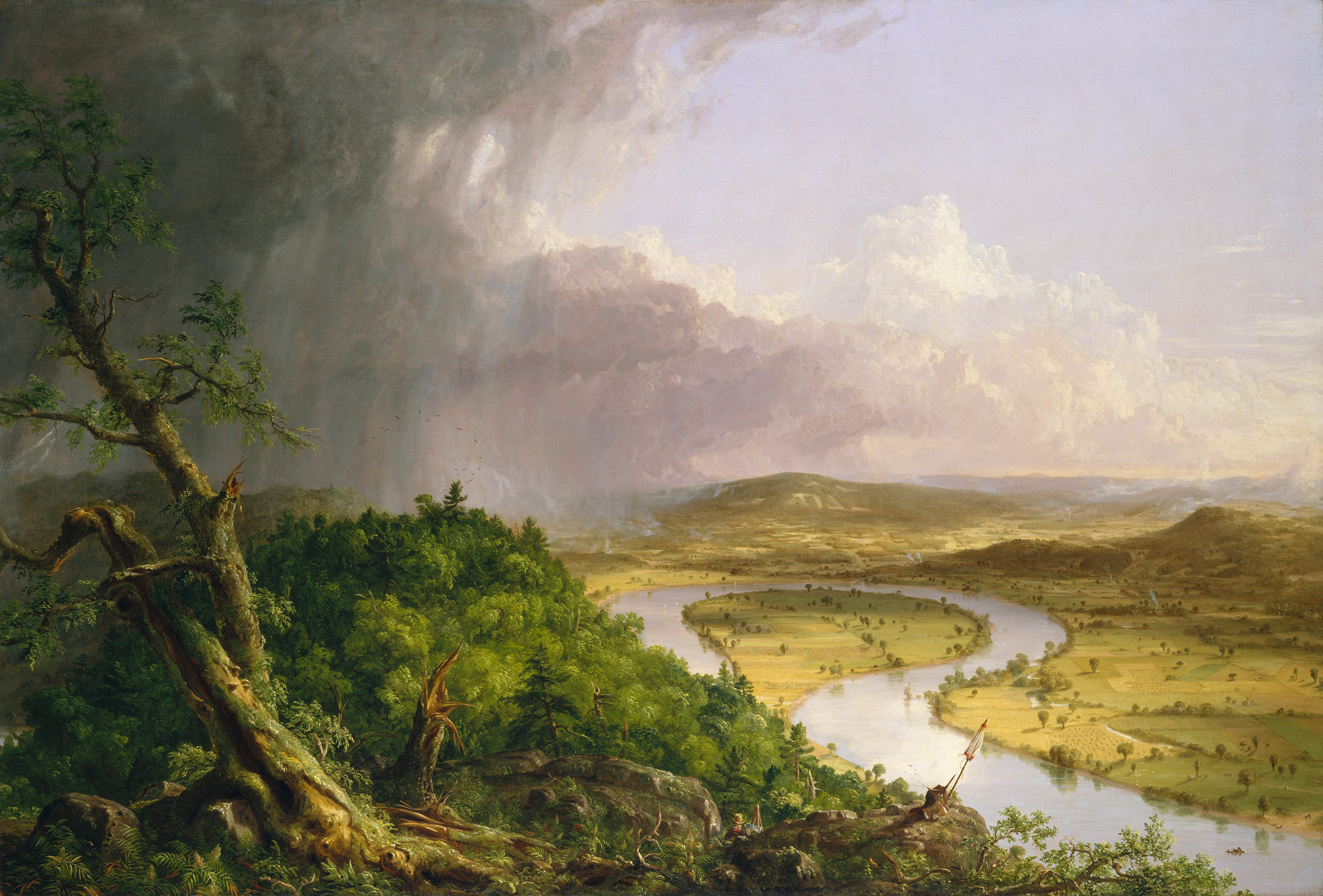THE NEW CRITERION, March 2018
On “Thomas Cole’s Journey: Atlantic Crossings” at the Metropolitan Museum of Art.
If there were ever an artist in need of some re-evaluation, it must be the painter Thomas Cole (1801–1848). Cole’s remarkable life has been long overshadowed by his outsize legacy in American art. Through his protégés Asher Brown Durand and Frederic Edwin Church, Cole famously inspired the “Hudson River School” of landscape painting. But this was a term Cole never knew in his lifetime. His own work, dense with allegory and narrative, shares less than one might expect with the more empirical American landscape artists of the second half of the nineteenth century. In his painted tribute of 1849, Durand immortalized his mentor in death, at forty-seven, as the “Kindred Spirit” of both the poet William Cullen Bryant and the American wilderness, as Cole and Bryant look out over Kaaterskill Falls and the wilds of the Catskill Mountains. But Cole was anything but a rustic, as one might assume, or an American provincial—or even, for that matter, American-born.
“Thomas Cole’s Journey: Atlantic Crossings,” an ambitious and scholarly exhibition now at the Metropolitan Museum of Art, reconsiders the New World paintings of the English-born Cole in light of his engagement with Old World art.1 This engagement included the Old Masters, in particular Claude Lorrain, on through Cole’s contemporaries J. M. W. Turner, John Constable, Thomas Lawrence, and John Martin—all of whom he met first-hand through repeated “Atlantic crossings.” By exhibiting Cole’s masterpieces such as The Course of Empire (1833–36) and The Oxbow (1836) alongside the very paintings that Cole saw in the exhibition halls and studios of Europe, “Atlantic Crossings” makes the case that this renowned American artist was enriched by a surprisingly modern and worldly view.
And such revisionism makes sense for anyone who has ever wondered about Cole’s unusual body of work and his true place in American art. It has taken a transatlantic pair of curators to bring such questions to light: Elizabeth Mankin Kornhauser (American), the Alice Pratt Brown Curator of American Paintings and Sculpture at the Metropolitan Museum; and Tim Barringer (British), the Paul Mellon Professor of the History of Art at Yale University. The genesis for their exhibition emerged in 2013, when the two worked together for a time in the Met’s American Wing. Christopher Riopelle, the Curator of Post-1800 Paintings at the National Gallery, London—where the exhibition will travel next—also contributes his own understanding of European paintings at the time of Cole’s foreign sojourns, as well as the role of the plein-air oil sketch, which Cole adopted during his time in Florence in 1831.
“Cole’s life was anything but insular,” these curators write in their catalogue introduction. “Rather, it was marked by restless transatlantic travel and by a complex, often troubled, engagement with the traditions of European art and thought, a commitment that countered, but paradoxically also heightened, Cole’s abiding passion for the American wilderness.”
Thomas Cole was born on February 1, 1801, in the factory town of Bolton-le-Moors, in Lancashire, England. The city was a center for textile manufacturing on the front lines of Britain’s Industrial Revolution. In 1812, hand-laborers who had lost their livelihoods in spinning and weaving to mechanization attacked and firebombed the Bolton plants. Along with the general squalor and depredations of England’s factory towns, these “Luddites,” named after the folkloric character of “Ned Ludd,” helped define Cole’s dim view of industry and progress.
The Leader of the Luddites, 1812, Hand-colored etching, British Museum, London
Far from the American wilderness we might expect, the first rooms of “Atlantic Crossings” are therefore filled with similarly bleak images of urban industry by Turner and Philippe Jacques de Loutherbourg. (Less propitiously, I should add, these rooms are also filled with the voice of the pop singer Sting, who has recorded the narration for an opening video. I am sure this celebrity selection sounded good when commissioned for the exhibition. The sound has a less salubrious effect when heard on repeat through the painting galleries. This latter-day Luddite critic simply asks that curators consider the disturbance of such noise in their shows.)
Up against Britain’s new economy, Thomas Cole’s father, James Cole, failed in a string of manufacturing ventures. Ultimately, these failures helped propel Thomas’s successes. At thirteen, Thomas Cole found apprentice work in the production of calico fabrics, designing wood blocks used for printing patterns. A book of such patterns is included in the exhibition. Moving to nearby Liverpool, Cole then became an engraver’s apprentice and was first exposed to the Old Master collection of William Roscoe, the “Liverpool Medici.”
In 1818—two hundred years from the current exhibition, the curators note—the Cole family set sail for America. As James Cole attempted to establish, again unsuccessfully, a wallpaper printing business in Steubenville, Ohio, Thomas, now a young adult, worked as an engraver’s assistant in Philadelphia.
In April 1825, Cole made his way north to New York. It was the year of completion for the Erie Canal, a defining achievement for the emerging world city. It also proved to be an auspicious moment for an artist who would become famous for painting the changing wilderness along the country’s arterial waterways, in particular the Hudson River.
Thomas Cole, View of the Round-Top in the Catskill Mountains (Sunny Morning on the Hudson), 1827, Oil on panel, Museum of Fine Arts, Boston
With little in the way of formal training, Cole rapidly scaled the heights of New York’s burgeoning art scene. Paintings such as View of the Round-Top in the Catskill Mountains (Sunny Morning on the Hudson) (1827) announced his arrival. In “Atlantic Crossings,” this stunning painting rises out of nothing, but it already displays many of the characteristics that defined Cole’s body of work: steep, vertiginous perspectives with clear layers of fore-, middle-, and background; gnarled, anthropomorphic trees playing out a melancholy dance on a rocky stage as though illuminated in spotlight; slivers of the Hudson River along a high horizon line signaling deep distance. His dramatic painting Scene from “The Last of the Mohicans,” Cora Kneeling at the Feet of Tamenund (1827) extends these compositional techniques, with theatrical trees replaced by a staging of James Fenimore Cooper’s Leatherstocking bodice-ripper. Cole found ready patronage for his heroic local scenery among New York’s growing collector class. Their interest in the state’s dramatic sites was hastened by an emerging tourist trade, which brought a new awareness to both the natural beauty and rapid development of the upstate region.
In 1829, through the encouragement of his New York collectors, Cole set out to expand his artistic education back in Europe. He brought with him his sketchbooks of Niagara Falls and other New World wonders with which he hoped to interest Old World buyers. His sales strategy met with limited success, but it was enough to sustain a prolonged Grand Tour that began in London and continued through France and Italy from 1829 through 1832.
The artists Cole was able to meet along the way, all while still in his twenties, attest to both his manifest talents and his intense ambitions. He arrived in London in time to catch the 1829 summer show at the Royal Academy. The exhibition included Constable’s Hadleigh Castle, The Mouth of the Thames—Morning after a Stormy Night (1829) and Turner’s Ulysses Deriding Polyphemus—Homer’s Odyssey (1829), each now exhibited together again in “Atlantic Crossings,” on loan from the Yale Center for British Art and The National Gallery, London, respectively. Cole attended salons with John Martin and joined Thomas Lawrence, the president of the Royal Academy, for breakfast at his home, followed by a tour of his studio.
But Cole was anything but starstruck. His writings tell of his often humorously low regard for the artists he met. Turner, whom he visited in his studio, was among his greatest disappointments: “I had expected to see an older looking man with a countenance pale with thought, but I was entirely mistaken. He has a common form and common countenance, and there is nothing in his appearance or conversation indicative of genius.” The same goes for the paintings in the Louvre: “I was disgusted in the beginning with their subjects. Battle, murder and death, Venuses and Psyches, the bloody and the voluptuous, are the things in which they seem to delight: and these are portrayed in a cold, hard, and often tawdry style.”
Cole returned to the United States in late 1832. Within four years he completed his most ambitious works: View from Mount Holyoke, Northampton, Massachusetts, after a Thunderstorm—The Oxbow, a longtime staple of the Met’s American painting collection, and the five-canvas cycle of The Course of Empire, on loan from the New-York Historical Society.
Joseph Mallord William Turner, Snow Storm: Hannibal and His Army Crossing the Alps, 1812, Oil on canvas, Tate Britain, London.
The classical fantasy of The Course of Empire and the modern factualism of The Oxbow might seem worlds apart. Yet both came out of Cole’s European travels, argues “Atlantic Crossings,” and the visual evidence seems hard to dispute. The same swirling storm clouds of Turner’s Snow Storm: Hannibal and his Army Crossing the Alps (1812) threaten the summit of Mt. Holyoke in The Oxbow. The ruined tower in the left foreground of Constable’s Hadleigh Castle reappears as the overgrown column in The Course of Empire: Desolation. Even the classical columns in the central panel of The Course of Empire have an uncanny resemblance, as Tim Barringer points out, to Cumberland Terrace in Regent’s Park, near Cole’s London lodgings. Yet what’s most remarkable, perhaps, is the result of a new study of The Oxbow. Advanced infrared imaging has revealed that this painting in fact began as an early canvas for The Course of Empire, which Cole painted over.
The same ideas of civilization’s fall, spread over the five panels of The Course of Empire, are summarized in The Oxbow. An Edenic paradise becomes a decadent empire; an American wilderness gives way to the encroachment of farming and logging. This same millenarian view can be found embedded in most everything Cole painted, whether it be the ruins of Aqueduct near Rome (1832) or the ruined forests in the foreground of River in the Catskills (1843).
Born into the English Dissenting tradition and baptized in the fires of Bolton, Cole railed against the “copper-hearted barbarians” and “dollar-godded utilitarians,” the “toiling to produce more toil—accumulating in order to aggrandize” in his writing and his art. His perspective was not that of forward projection but of cautionary reflection, with a message particularly aimed at his adopted homeland, where he became a citizen in 1834.
Thomas Cole, View from Mount Holyoke, Northampton, Massachusetts, after a Thunderstorm—The Oxbow, 1836, Oil on canvas, The Metropolitan Museum of Art.
The painterly innovations Cole picked up in Europe, in particular the mechanics for plein-air oil sketching, inspired the florid naturalism of his American disciples. Yet Cole himself was always less and something more than a pure landscape painter. Unlike the later landscapes of Church or Durand, where nature speaks for itself, Cole used nature to speak for his ideas. Of course, all great landscape painting says something, but Cole’s messaging was more explicit. His compositions were both allegories and real places. His landscapes were science fictions—science and fiction in equal measure. Cole’s overt political messaging might help explain his recent resurgence, even as interest in the later Hudson River School continues to wax and wane. Yet Cole resists oversimplification. He was more than a proto- environmentalist immigrant railing against the populist politics of Jacksonian America. Beyond the political situation, he gave vision to the human condition.
1 “Thomas Cole’s Journey: Atlantic Crossings” opened at the Metropolitan Museum of Art, New York, on January 30 and remains on view through May 13, 2018. The exhibition will next travel to The National Gallery, London (June 11–October 7, 2018).



